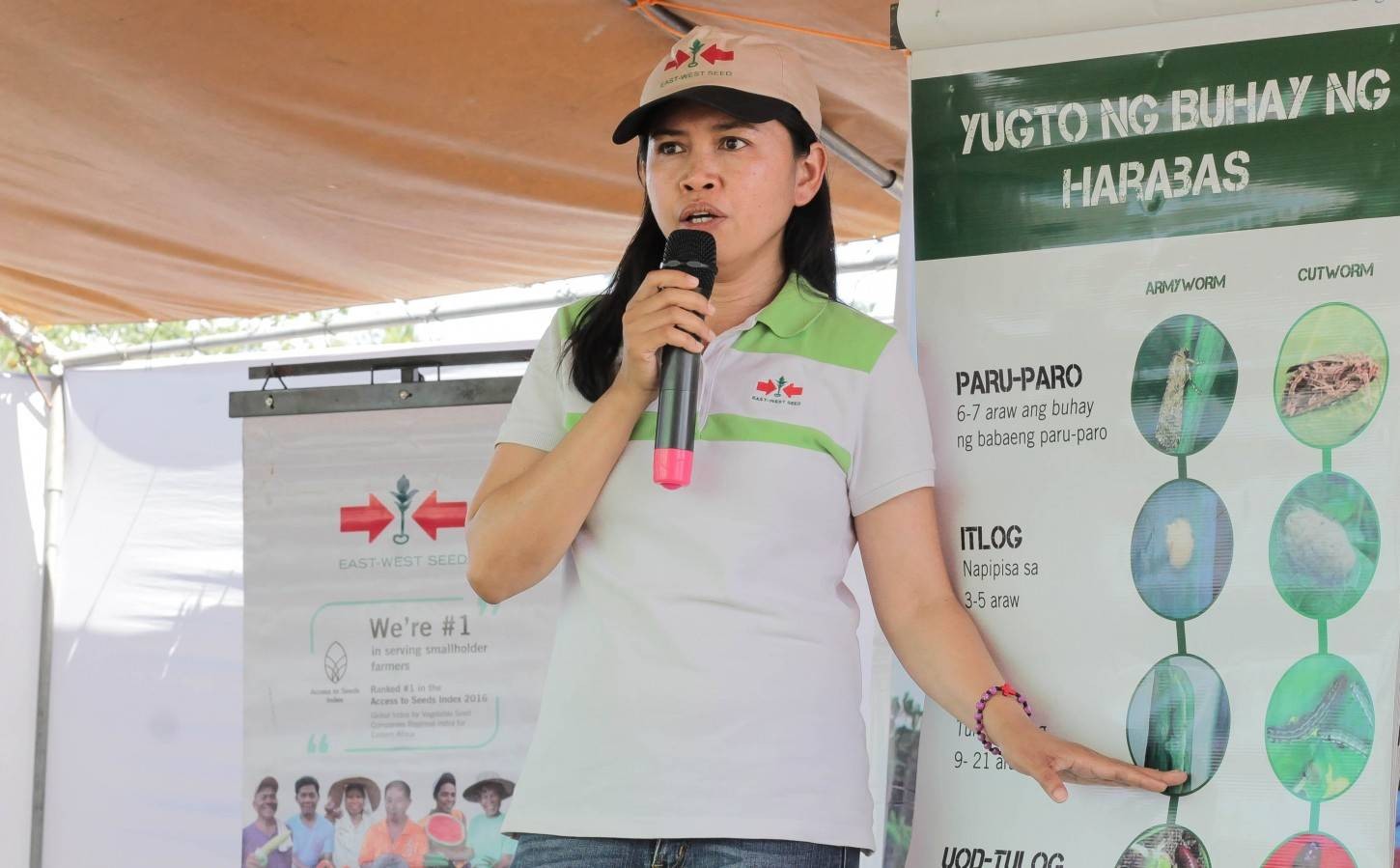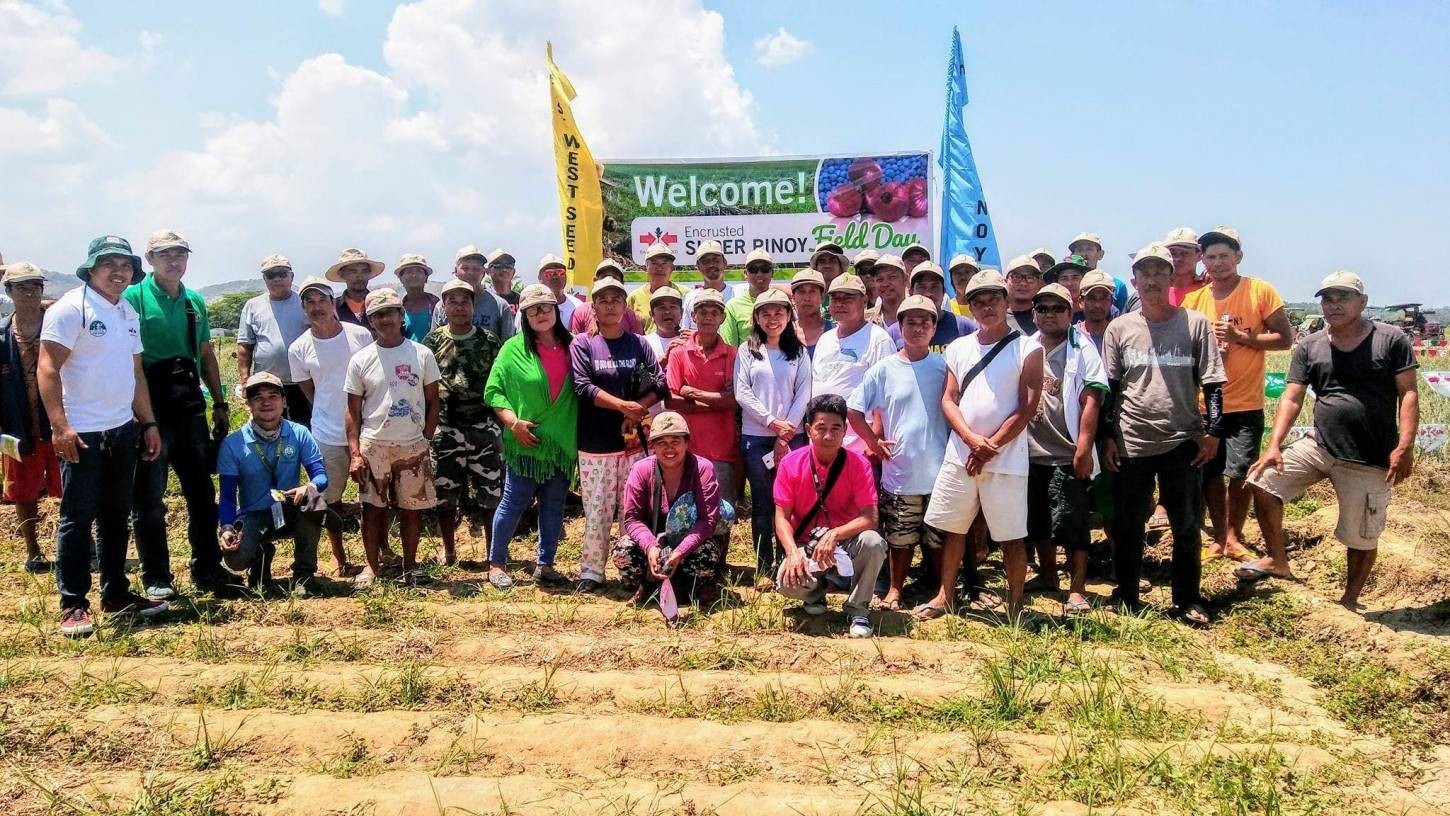The Philippines
28 March 2018
Source: East-West April 2018 newsletter
 Onion is regarded as one of the most indispensable culinary ingredients in the Philippines. The Ilocos Region is the top producer of native onions in the country.
Onion is regarded as one of the most indispensable culinary ingredients in the Philippines. The Ilocos Region is the top producer of native onions in the country.
Last February, onion farmers from several towns in Pangasinan reported massive Harabas (armyworm) infestation in their farms. Pangasinan is one of the largest onion producing provinces in the Philippines, producing 50 million tonnes of red onion annually for markets in Metro Manila and North Luzon. The value of onion production to Pangasinan farmers is worth PhP 1.25 billion every year.
Approximately 500 hectares of land planted with onions were reported to be affected by the destructive pest. The Harabas larvae feeds on the tender part of the leaves, leaving the veins “skeletonized”. The feeding reaches down to the bulbs, resulting to huge yield losses.
In support of the Department of Agriculture’s initiatives to help onion farmers in addressing the Harabas outbreak, East-West Seed, through its Allium team, held a series of Onion Field Days in Pangasinan and nearby onion-producing provinces, Tarlac and Nueva Ecija, from February to March 2018.
Technical assistance
 KNOW YOUR ENEMY. East-West Seed entomologist Dr. Jedeliza Ferrater conducts a comprehensive lecture on Harabas for onion farmers. Practical tips on control and management of Harabas were discussed and the farmers were given the chance to ask questions.
KNOW YOUR ENEMY. East-West Seed entomologist Dr. Jedeliza Ferrater conducts a comprehensive lecture on Harabas for onion farmers. Practical tips on control and management of Harabas were discussed and the farmers were given the chance to ask questions.
Over 600 farmers attended these field days where East-West Seed experts taught them how to effectively control and manage Harabas. Best practices in onion production and management of other pests and diseases were also discussed during the field days.
“The Harabas outbreak poses a huge threat to the livelihood of our farmers. Through these field days, we hope to minimize risk and losses by educating them on proper pest management practices,” said Dr. Jedeliza Ferrater, East-West Seed’s entomologist.
Dr. Ferrater shared ways on how to control and manage Harabas:
- Monitor the area regularly and look for signs of armyworm or cutworm presence such as moths, eggs, larvae and pupae.
- Hand-pick the eggs and larvae to reduce population.
- Remove weeds and volunteer plants that may serve as alternate hosts.
- Cultivate the soil by plowing and harrowing, and use plastic mulch to minimize pupation in the soil.
- Plant trap crops like sunflower, taro or castor plants around the area.
- Use beneficial microorganisms such as nuclear polyhedrosis virus (NPV) and entomopathogenic fungi Beauveria bassiana, Metarhizium anisopliae and beneficial bacterium Bacillus thuringiensis kurstaki strain to reduce larvae population.
- Apply botanical insecticide like neem extract.
- Apply insecticides when necessary and ensure that these insecticides are of different modes of action .
 Onion farmers gather with East-West Seed staff in one of the onion field days in Pangasinan.
Onion farmers gather with East-West Seed staff in one of the onion field days in Pangasinan.
The onion field days were made successful with the cooperation of East-West Seed’s partner farmers and the local government units of Pangasinan, Tarlac, and Nueva Ecija.
For more information on how to manage armyworm click here: Know Your Enemy: Harabas